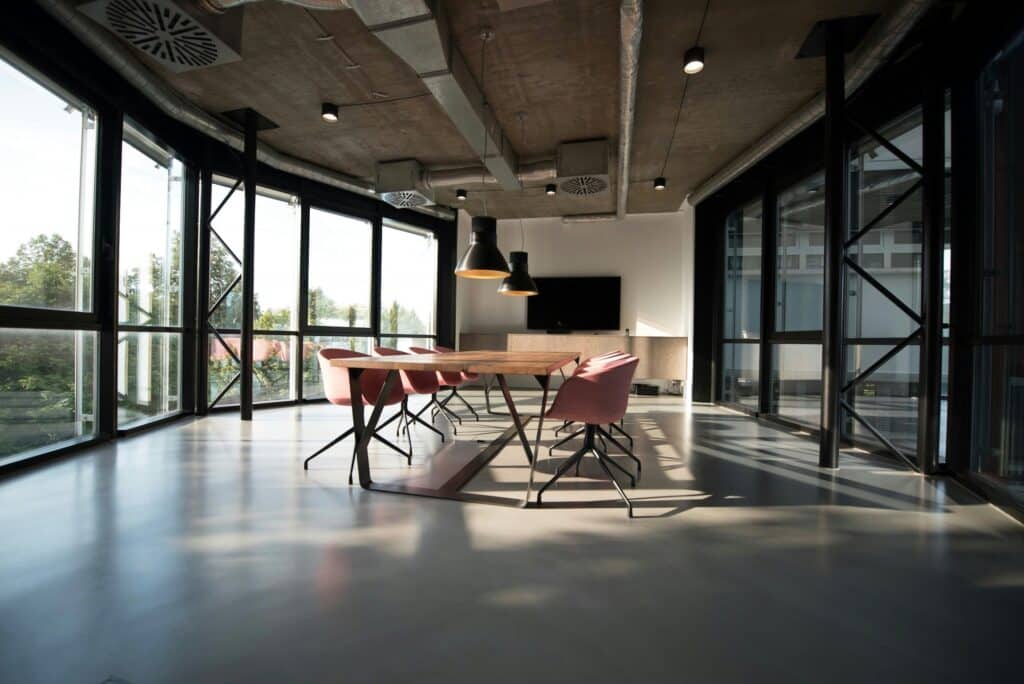Choosing the right digital signage hardware is one of the most important decisions a business can make when launching or scaling its communications strategy. Whether you’re aiming to improve internal communications or create a more engaging customer experience, having the right screens, media players, and support systems in place will make all the difference.
Let’s break down what you need to know!
Understanding Different Display Options
When it comes to digital signage, the display is the first thing audiences see. That means it needs to be the right size, resolution, and specification for your environment. There’s no one-size-fits-all when it comes to a digital signage display.
Commercial displays are purpose-built for longer run times and brighter environments. They significantly outperform regular TVs in both durability and visibility. If you’re displaying digital signage in corporate reception areas, boardrooms, or open-plan offices, a professional-grade display ensures your content looks sharp and consistent.
Touchscreen displays are ideal if you want to encourage interaction. These sorts of displays are popular in internal communications digital signage setups, for example, allowing employees to explore company updates, event calendars, or even training resources directly.
High-brightness and outdoor displays are essential if your screens will be placed in sunlit areas or outside. A dim screen might save money upfront, but it won’t get your message across or make an impact.
Need help choosing a screen? Check out our digital signage hardware guide for detailed advice.

Media Players and Their Functions
The screen shows your content, but it’s the media player that makes everything work.
A media player connects to your screen and deploys content to it from your digital signage software. In digital signage corporate environments, this might include dashboards, announcements, or safety updates. In retail or customer-facing businesses, this could be promotional videos or menus.
There are different types of media players available:
- Plug-and-play devices: These are compact and great for smaller setups or simple deployments.
- Windows-based players: More powerful, with greater flexibility for complex or large-scale networks.
- System-on-Chip (SoC) displays: These have the media player built into the screen itself, offering an all-in-one solution – ideal for streamlined corporate digital signage installations.
There really is no “right” choice of player. Ultimately, it all depends on the scale of your project, the type of content you want to show, and how much control you need. For internal communications, digital signage across multiple locations, a robust media player with remote management capabilities is key.
Installation Considerations
Installation often gets overlooked during planning, but it’s vital for long-term success. Poor placement, limited power access, or unstable mounts can seriously compromise performance and safety.
Here’s what to consider:
- Mounting options: Wall mounts are sleek and space-saving, but you’ll need to check the wall’s suitability and cable routing. Ceiling mounts or freestanding kiosks work better in open-plan areas or high-traffic zones.
- Cable management: Clean cabling isn’t just about neatness – it’s about safety and reliability. Wherever possible, aim for hidden cabling routed through trunking or behind walls.
- Connectivity: Ensure your signage has stable internet access. This is particularly important for cloud-based digital signage corporate communications, where you need real-time updates and remote troubleshooting.
At TrouDigital, we help businesses map out their installation strategy to avoid common issues and ensure everything works from day one.
Maintenance and Support Services
Once your digital signage system is live, maintenance and support shouldn’t be an afterthought. In fact, for digital signage in corporate environments, especially those that span multiple offices or regions, ongoing support is just as important as the initial setup.
Remote support tools allow issues to be diagnosed and fixed without needing an engineer on-site. This reduces downtime and keeps internal communications digital signage running smoothly.
Regular content updates and software maintenance also ensure that your messaging stays updated and secure. A good provider will offer:
- System monitoring
- Technical support (phone, email, remote)
- Hardware warranty and replacements
- Content scheduling and update assistance
If you’re rolling out a network of screens for corporate digital signage, choose a provider that offers scalable support. This not only ensures a smoother experience but helps your team stay focused on what matters, engaging your audience.
Learn more about our full-service corporate digital signage solutions here.
Final Thoughts
The right digital signage hardware is about more than just screens, it’s about creating a reliable, effective communication system that scales with your business. From display types to media players, installation to maintenance, every element plays a role in the bigger picture.
Whether you’re enhancing internal communication with staff or projecting your brand to customers and visitors, digital signage corporate communications work best when built on a solid foundation. And it all starts with the hardware.
If you’re unsure what setup is right for you, we’re here to help. From consultation to installation and beyond, we make sure your digital signage is built to last.
